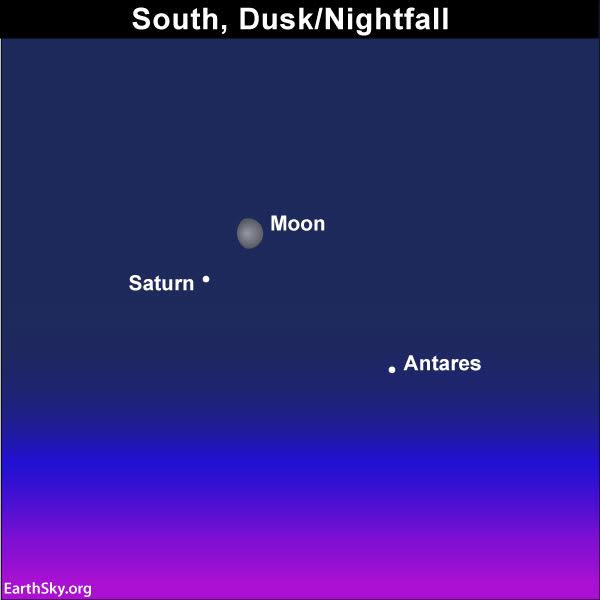Tonight – August 2, 2017 – the moon and the ringed planet Saturn pair up together at nightfall. In the same vicinity of sky, note another bright celestial beauty: the ruddy star Antares, the brightest star in the constellation Scorpius.
Clouded out tonight? Watch for them tomorrow night, too …
Saturn and Antares are bright, both exhibiting 1st-magnitude brightness. However, you can distinguish these two celestial luminaries by color. Saturn displays a golden hue while Antares has a ruddy complexion. If it’s hard for you to discern color, try observing Saturn and Antares with binoculars.
Better yet, try observing Saturn with a telescope. You can view Saturn’s glorious rings even with a modest backyard variety.

Did you know that, as seen from Earth, the orientation of Saturn’s rings appears to shift regularly, over time? This happens as we orbit the sun yearly, while Saturn orbits once every 29.5 years. In 2017 – as we gaze across space to Saturn – we are seeing the north face of Saturn’s rings. Saturn’s rings are inclined at 27o toward Earth in 2017, which is about as wide open as they ever appear to us from our world.
We see the north face of the rings for about 15 years and 9 months, then the south face for about 13 years and 9 months. The difference is due to Saturn’s eccentric orbit, with the planet traveling most swiftly at perihelion and most slowly at aphelion.
The north side of Saturn’s rings will open up most fully on October 26, 2017, to exhibit a maximum inclination of 27o.
Thereafter, the inclination of Saturn’s rings will slowly but surely diminish until the rings appear edge-on in the year 2025. At this juncture, Saturn’s rings will appear invisible to earthly observers for about one and one-half months. That’s because the rings are so thin, in contrast to their width.
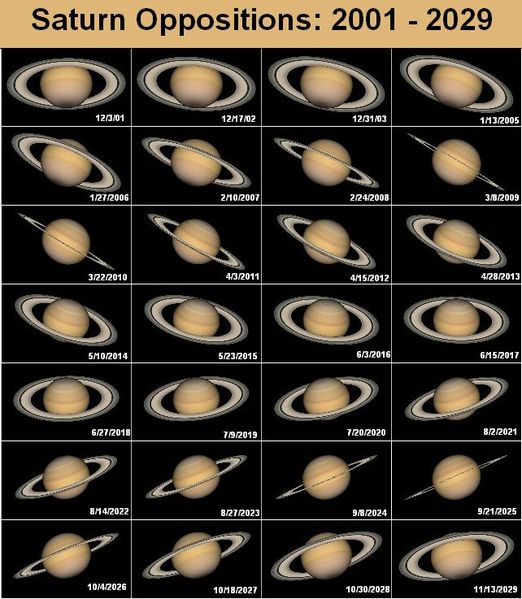
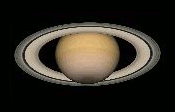
After the year 2025, the south side of Saturn’s rings will start to show. Then some seven years later – on May 12, 2032 – the south side of Saturn’s rings will become maximally inclined (27o) toward Earth.
Some seven years after the south side of Saturn’s rings opens up most fully, the rings will appear edge-on and return to invisibility in 2039. Some seven years after that, the north side of Saturn’s rings will become maximally inclined (27o) toward Earth on November 15, 2046.
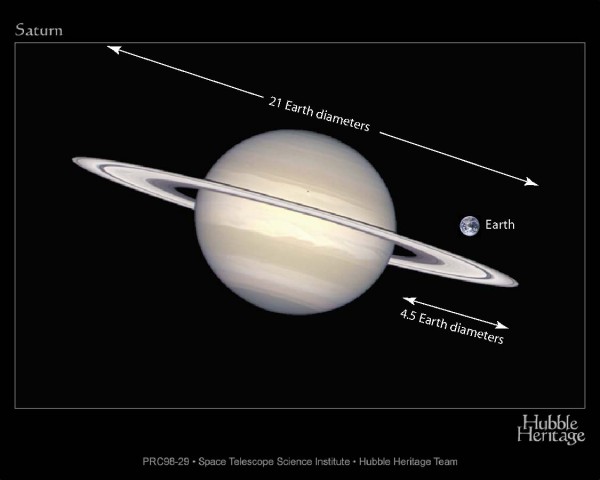
Saturn’s rotational axis is inclined at 27o to its orbital plane, and – as we said above – this planet takes nearly 29.5 Earth-years to orbit the sun. Therefore, the maximum inclination of Saturn’s rings recurs in a cycle of about 29.5 years, as is shown in the table and diagram below:
Maximum inclination of Saturn’s rings in the 21st century (2001 to 2100)
2003 Apr. 7: South face inclined 27o 01’
2017 Oct. 16: North face inclined 26o 59’
2032 May 12: South face inclined 26o 58’
2046 Nov. 15: North face inclined 26o 56’
2062 Mar. 31: South face inclined 27o 01’
2076 Oct. 9: North face inclined 27o 00’
2091 May 4: South face inclined 26o 59’
Source: page 295 of More Mathematical Astronomy Morsels by Jean Meeus
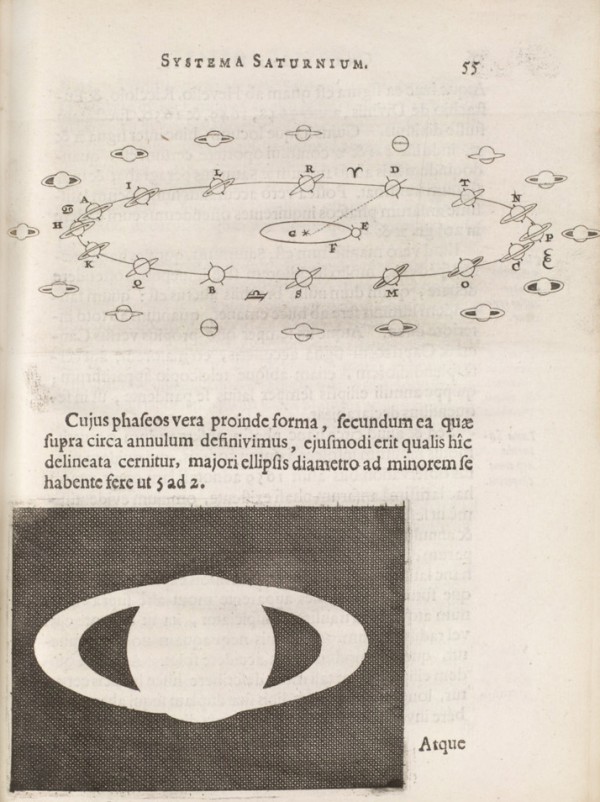
Bottom line: On August 2, 2017, use the moon to locate the ringed planet Saturn as darkness falls. Miss ’em tonight? Try again tomorrow night.



